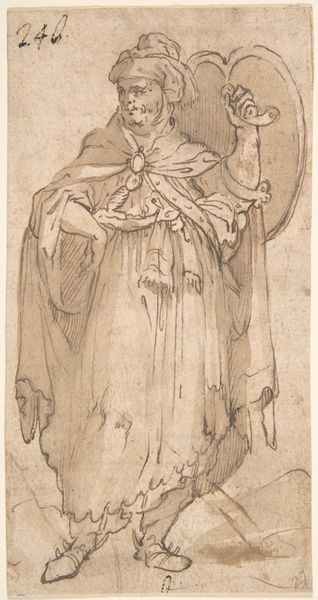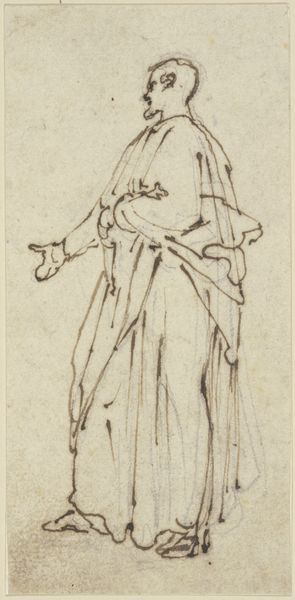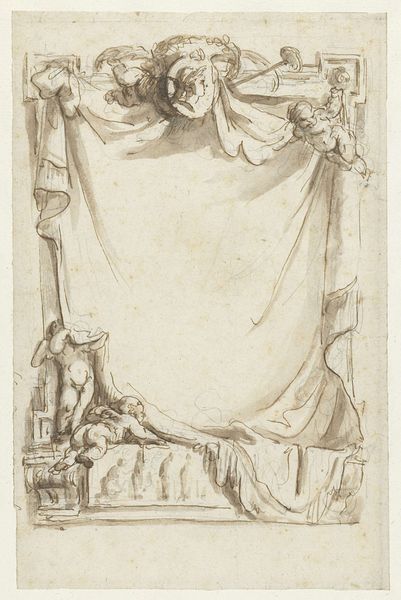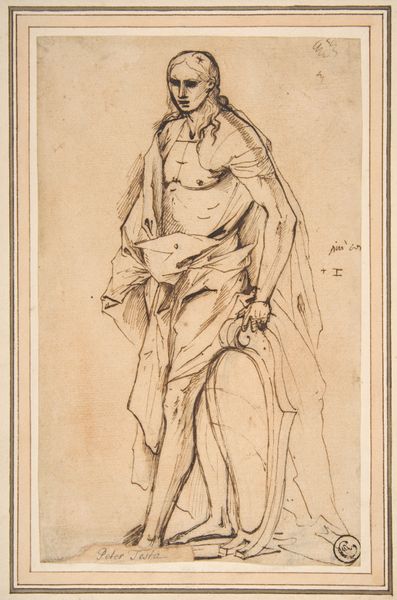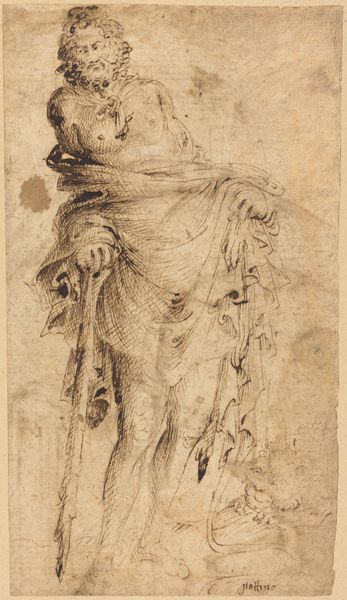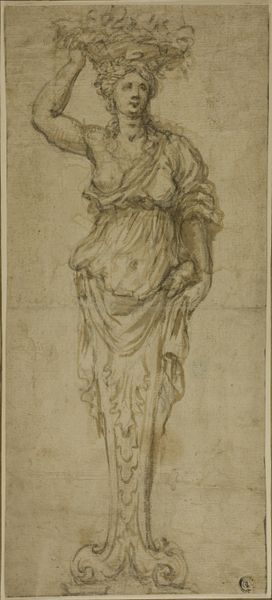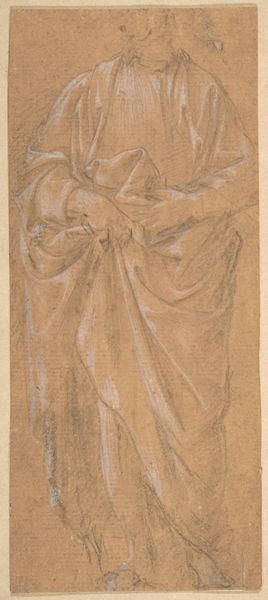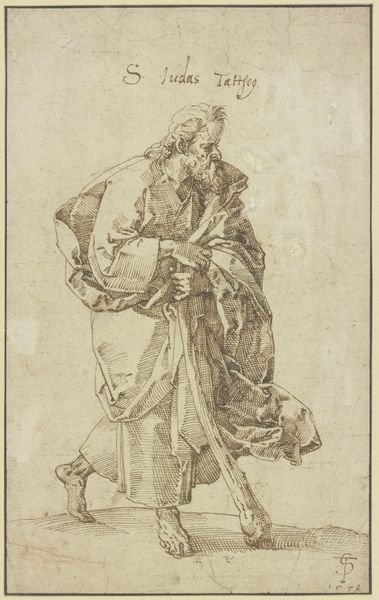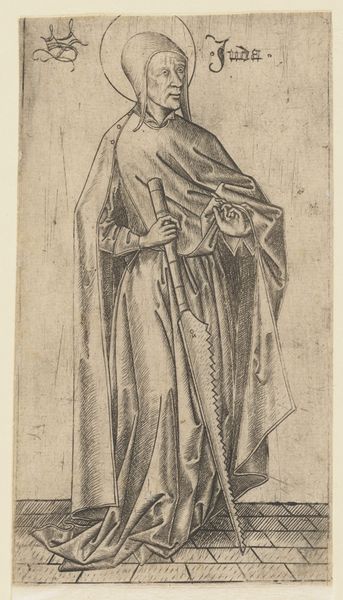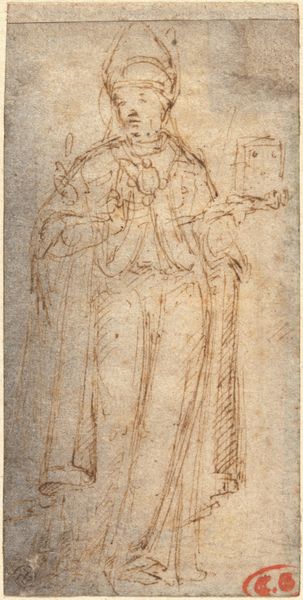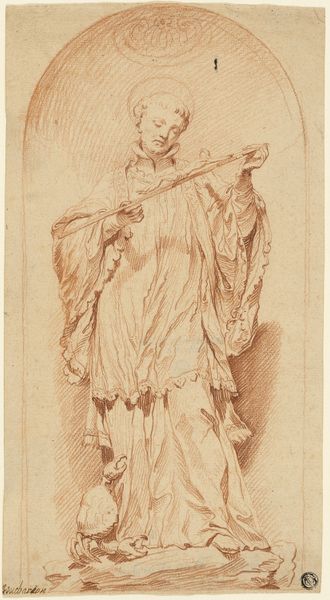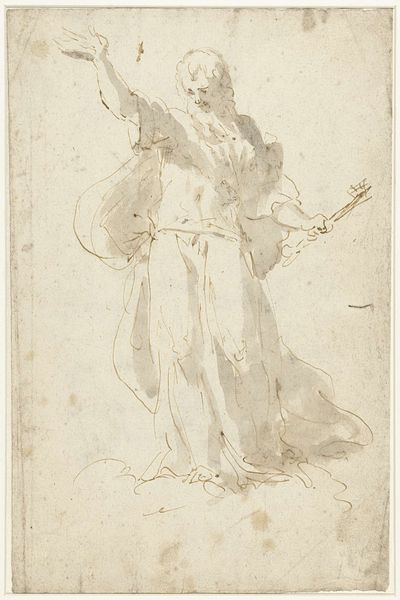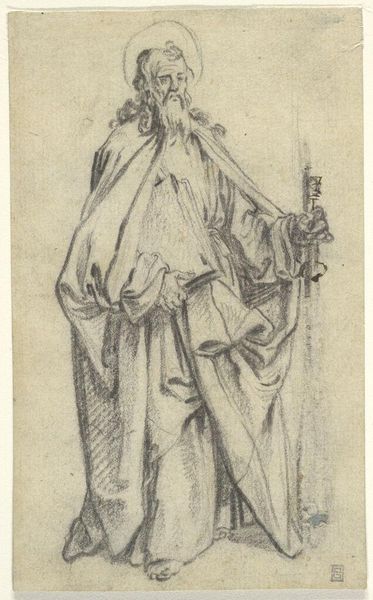
drawing, print, ink
#
portrait
#
drawing
# print
#
figuration
#
11_renaissance
#
ink
#
italian-renaissance
Dimensions: 6 1/2 x 2 15/16 in. (16.5 x 7.5 cm)
Copyright: Public Domain
Curator: Looking at Durer’s “Saint Catherine of Alexandria,” a drawing executed in ink, likely created between 1490 and 1528. It currently resides at the Metropolitan Museum of Art. What's your initial take? Editor: The immediacy of the line work grabs me; the way Durer captures the flowing fabric with such economy… there's a vulnerability conveyed by the slightness of the sketch itself. Curator: Agreed. Considering it’s an ink drawing, the materiality is paramount here. The availability and quality of ink, the paper—these factors inevitably dictated the final product. One must also consider Durer’s studio practice, perhaps assistants involved in the initial stages of production? The labor division in early printmaking and drawing production should not be ignored. Editor: And what of Saint Catherine herself, a figure positioned within a complex matrix of power, religion, and gender? Her iconic status as a scholar and martyr is visualized through the attributes of the sword and the wheel - a violent ending for defiance. Considering the period, think about what choices this woman might realistically have had in her life; perhaps Durer hints at the confined, rarefied, perhaps tragic life. Curator: It's also worth noting that printmaking in Durer's time was not simply a reproduction method. Prints could be viewed as originals. How this particular drawing was intended to be circulated and consumed becomes relevant. Was this piece preliminary for a larger composition, or an end product in itself? Editor: Furthermore, there are implications to this portrayal of idealized beauty that would be considered feminine. The subtle power she yields in contrast with her presentation tells the complex truth. We need to be hyper-conscious about how this piece portrays women and religious power in that period versus how it may reflect our current sensibilities of beauty, power, or faith. Curator: Absolutely. Reflecting on our discussion, I am struck by how even a seemingly simple ink drawing opens pathways into the artistic manufacturing of its era, which cannot be seen with any modern substitute today. Editor: And for me, it highlights the necessity to approach these artworks as reflections of their era while always being keenly aware of our place, here, now, engaging with historical narratives.
Comments
No comments
Be the first to comment and join the conversation on the ultimate creative platform.
